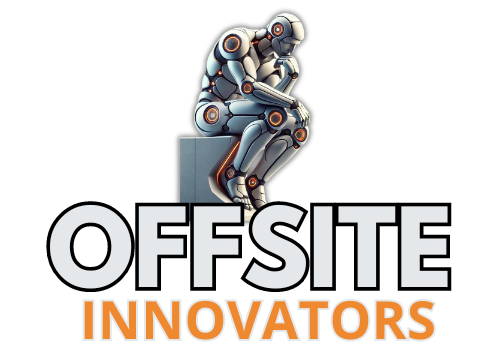Where Can the Next Generation of Construction Innovators Turn for Help?
After nearly two decades writing about offsite construction and spending even more time in the trenches of the building industry, I’ve come to appreciate something simple but powerful:
The best ideas don’t always come from the top.

They often come from high schoolers, trade students, and college freshmen who see the problems in our industry differently—and aren’t afraid to ask “Why not?”
But here’s the problem.
While I’ve met plenty of sharp young minds with game-changing ideas for materials, factory processes, robotics, energy savings, or layout design—most don’t know where to go to develop them. Their ideas end up as forgotten sketches, missed chances, or worse: someone else launches a similar idea five years later.
So, where can these young innovators turn? Here’s what I’ve found:
Start at Home: Parents and Teachers
This is the first support system.
Parents who notice their kid tinkering with CAD programs or 3D printing in the garage should ask, “What would help you take this further?” Teachers who see students excelling in shop class, robotics, or environmental science can help them enter local innovation fairs or apply for grants. One good nudge can change a life.

Seek Out “Junior Shark Tank” Organizations
Yes, they exist—and some of them are fantastic.
These programs offer more than encouragement. They offer real mentorship, funding, and even investor-style pitching experiences for students:
Lemelson-MIT InvenTeams – Up to $10,000 in funding for technical inventions. Real-world problem solving with a teacher-mentor.
LaunchX – A summer entrepreneurship program for high schoolers who want to launch a product or service.
Diamond Challenge (Univ. of Delaware) – Offers cash prizes for high school business pitches with categories for innovation.
Young Entrepreneurs Academy (YEA!) – Helps teens build and launch real businesses with an investor pitch at the end.
These programs aren’t just “pretend business camps.” Many students come out with functioning prototypes, early sales, and connections that last for years.
Construction and Trade-Specific Mentorship
Our industry isn’t always great at outreach, but we do have a few powerful allies:
NAHB Student Chapters – These are tied directly to the building industry and offer student competitions, training, and trade show access.
SkillsUSA – One of the best programs out there for trades. It builds pride, skill, and innovation across a wide range of disciplines.
ACE Mentor Program – Architecture, Construction, and Engineering mentors team up with students on real design challenges.
ASCE Student Chapters – While more focused on civil engineering, many chapters support innovation challenges and infrastructure design projects.
If you know a student with a passion for building, even if it’s just Minecraft maps right now, these programs can help them connect the dots to a real career—and potentially a real product.
Makerspaces and Innovation Hubs
These are the physical playgrounds for innovation:
Fab Labs and makerspaces at libraries or community colleges now come equipped with CNC routers, 3D printers, and design software. Many offer youth memberships or “teen innovation nights.”
These are great places to prototype ideas, meet mentors, and get comfortable failing and trying again.
Colleges and Universities
You don’t have to be enrolled to benefit. Some schools open up their entrepreneur centers, pitch competitions, and prototyping labs to high schoolers through summer programs.
I’ve seen kids build solar-powered models, prefab prototypes, and AI tools for estimating—all before they’ve taken their SATs.
If you’re a parent or teacher reading this, check out what nearby colleges offer.
Online Communities and Early-Stage Funding
Don’t underestimate the power of a well-placed video or forum post:
Hack Club and 1517 Fund support young builders and coders with actual money and guidance.
Some kids are raising their first funds through Kickstarter and IndieGoGo—with help from an adult to manage the business side. Others are gaining early attention for construction-adjacent innovations on platforms like YouTube and LinkedIn.
I’ve seen a 14-year-old weld a custom trailer, another turn a shed into a smart home lab, and one who mapped out a fully modular disaster response village on his bedroom floor. These kids need guidance, not limits.
My Personal Challenge
If you’re a parent, teacher, or someone in the building industry like me, your voice matters.
A quick introduction, a “You should talk to this person,” or a “Try entering this challenge” might be all it takes to keep a young person moving forward with an idea that could genuinely change how we build.
Let’s stop treating youth innovation as cute and start treating it as essential.
If you know someone under 21 working on a promising idea in construction, modular housing, or building materials—send them my way. I’ll connect them to someone who can help.






